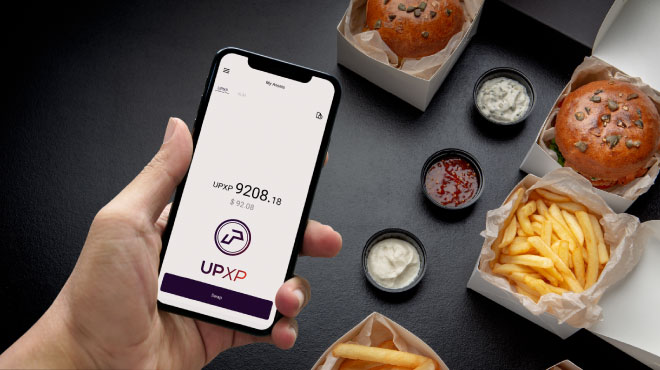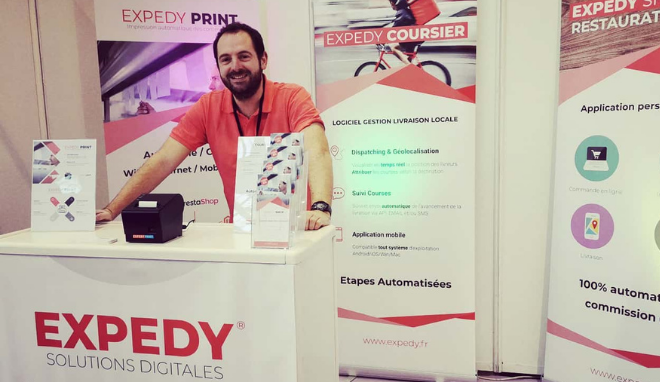
The restaurant industry is one of the most fast-paced work environments you’ll find. Efficiency is always the goal in restaurant management but it isn’t easy to achieve. With so much competition, restaurants have to ensure they are always providing high quality food and exceptional service. How can a restaurant operator streamline their day-to-day operations and make their restaurant stand out? Technology is developing at speed, allowing us to progress the restaurant industry and deliver a higher standard of service.
Traditional solutions can prolong service. For example, paper tickets usually slow down cook times, and dry erase boards at host stands can cause bottlenecks with front of house. Modern restaurant technology is a proven way to create a more efficient operation and enhance the guest experience. If restaurant technology isn’t your forte, this article will be a great resource to you. We’ve compiled a list of the most frequently used restaurant technology solutions, what they do, and how they’ll benefit your restaurant.
POS
A point of sale is a front of house solution. This is where a server physically rings up a customer’s order and the POS records transactions. A POS could be a terminal or tablet, such as an iPad.
Choosing the right point of sale solution is paramount to delivering a high quality service. A good POS will allow you to streamline different areas of your business and reduce cumbersome tasks such as collecting customer feedback or accounting.
An advanced POS can really drive sales up by reducing time-wasting tasks, allowing you to provide a quicker service and understand your business model approach. With access to past transactions, customer data and accounting all in one place, you have the ability to better understand what’s taking place within your restaurant. Having a clearer picture allows you to develop changes and new strategies to improve as a business. When integrated with a KDS, your point of sale
If you’re thinking about upgrading your current POS, consider the following areas:
Some POS systems require extra hardware, whereas some will integrate with your existing hardware.
The cost of EPOS (electronic point of sale) systems varies massively, so it’s important you set a realistic budget and list the ‘must have’ features that are critical to your restaurant.
Make sure you’ve seen a working demo of the POS in action before commiting to a purchase.
Consider how simple it will be to train your employees on the new POS system.
Guest Management
According to Opentable’s “Technology and Dining Out 2015” study, it was found that 85% of diners wish they knew how long the wait for a table would be. A huge 83% would love to add their names to a waitlist before arriving. These statistics support how important it is to have a guest management system in your restaurant.
Also known as a reservation system or table management software, this front of house solution manages reservations, wait lists, and provides analytics that helps restaurant owners make crucial management decisions. You can also collect guest information such as food allergies, anniversaries, and birthdays to help provide a better overall guest experience.
A guest management system will help keep your host stand organized and determine how many staff you need each night. You can predict a rush and make sure your staff are adequately prepared. In addition, this frees up your hostess from answering the phone so that he/she can focus more time on greeting guests.
Some guest management systems have a companion consumer app. This app helps your restaurant to be seen by more diners. It allows them to check waiting times, make reservations, and join any waiting list. Your host can inform guests on waiting lists when their table is ready via text. If a customer decides they needs to cancel a reservation, the guest management system will automatically re-populate the reservation time, allowing another guest to choose that time.
Some guest management systems provide booking widgets to add to your website, giving guests another platform to make reservations. The reservation management system will manage mobile, desktop, and call-in reservations so that your restaurant is protected against overbooking. Guest management systems can integrate with pagers too.
Think about how many diners are lost due to long waits. Consumer apps allow guests to get on a wait list or make reservations from the comfort of their home.
Kitchen Display System
A Kitchen Display System (KDS) is a back of house solution that replaces your paper tickets and kitchen printers. After an order rings through on a POS, it will display on the KDS. A KDS can also be much more efficient and economical than paper tickets, because paper is easily lost and typically requires someone in the expo position.
A KDS will manage food routing, recipe storage, and holds vital kitchen data. A KDS has a meal coursing feature that prioritises certain food items on a ticket. This ensures that food is fresh and the right temperature when it’s delivered to customers. For example, if a table of two orders a well-done steak and a salmon filet for their entrees, the KDS will route the steak to be cooked first. This helps cut down on manual work and ensures that meals are plated at the same time so guests are served hot food.
A KDS may also have a basic routing feature. This will guarantee that food is routed to the appropriate station (grill, pantry, fryer, etc.), helping to reduce kitchen stress and busywork for your staff. There are many benefits to having a KDS including organising your back of house, improving efficiency, reducing ticket times, and improving food quality.
Inventory Management
According to the USDA, around 133 billion pounds of food from stores, restaurants, and homes was wasted in 2010. The USDA also found that 30-40% of the United States’ food supply went to waste. Inventory management helps safeguard your restaurant from waste, theft, spoilage, and overproduction.
Inventory management integrates with other technology in your restaurant to manage inventory. There are a variety of types of data used to track inventory such as costs of goods, serial numbers, lot numbers, quantity of goods, and sell-by dates. Inventory management is a great tool to help plan menus, track food usage, calculate COGS (cost of goods sold), determine food costs, and control wastes.
This list should be a good start to understanding the basics of restaurant technology. When technology is implemented in your restaurant, your operation becomes more efficient, more capable, and more profitable. Thus creating a smarter restaurant. This in turn enhances the guest experience and keeps customers coming back.








Comments